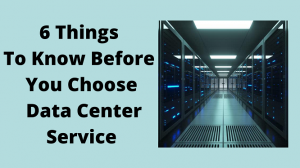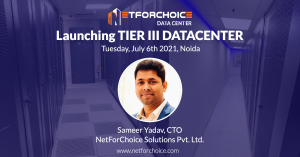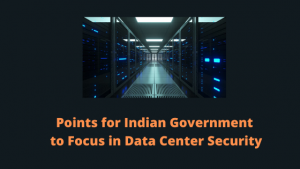Data Centers Explained: Architecture, Functionality, and Business Impact
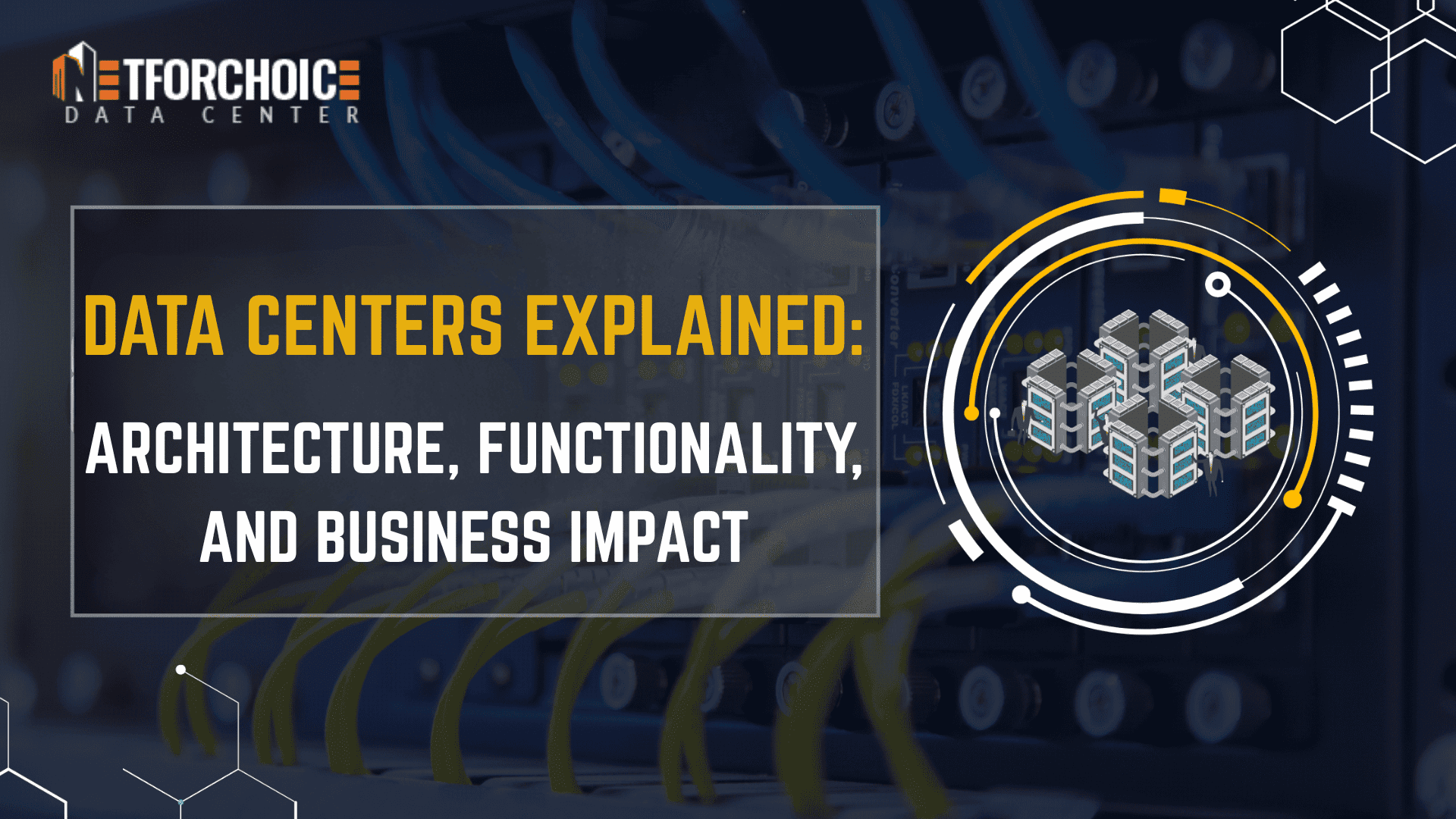
The infrastructure needed to store, handle, and safeguard data is more crucial than ever as it becomes the foundation of digital businesses. Today, data centers are the foundation of computing because they offer the strength, security, and dependability that companies seek in an interconnected digital environment.
We will cover all aspects in this article, including their construction, operation, and ability to generate actual business value.
What Is a Data Center?
A data center is a physical building utilized to store computer systems and related components like servers, network hardware, storage devices, and security tools. They are tasked with storing, processing, and redistributing large quantities of data on behalf of businesses, government agencies, and cloud providers.
From serving websites and executing applications to holding emails and backing up vital data, they make possible almost every digital service in the connected world today.
Key Components of a Data Center
A well-designed data center includes various layers of technology and infrastructure. The essential components include:
- Servers & Storage: Physical machines that host applications and store data.
- Networking Equipment: Switches, routers, and firewalls that connect the data center to users and the internet.
- Power Systems: Backup generators, UPS (Uninterruptible Power Supplies), and power distribution units (PDUs) to ensure uptime.
- Cooling Systems: HVAC and precision cooling to maintain optimal temperatures.
- Security Systems: Biometric access control, video surveillance, and cybersecurity tools to protect assets.
These elements work together to deliver continuous, high-performance data services.
Types of Data Centers
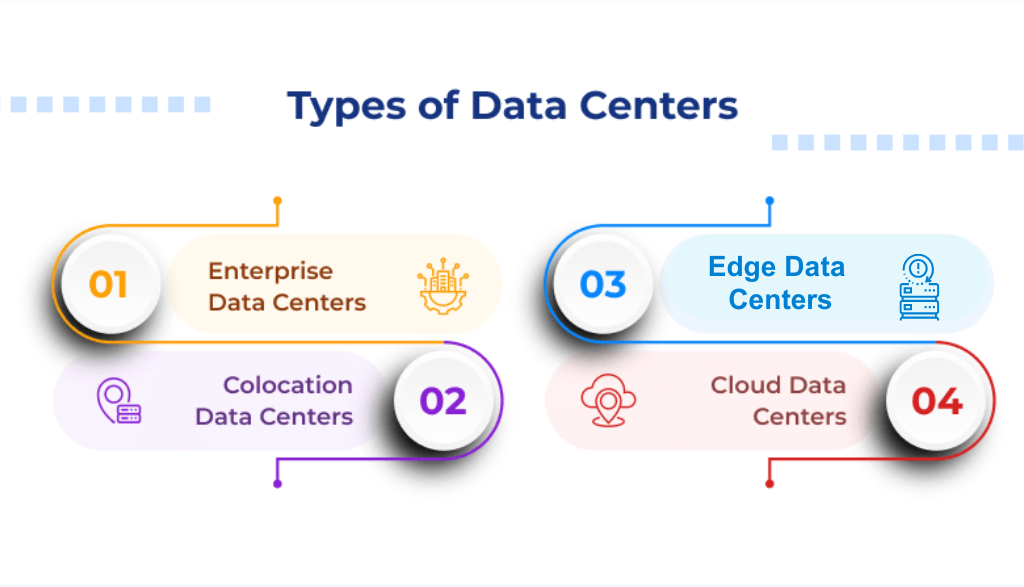
Different types of data centers serve different operational needs:
- Enterprise Data Centers: Owned and operated by individual companies for their internal needs.
- Colocation Data Centers: Businesses rent space, power, and cooling within a third-party facility.
- Cloud Data Centers: Hosted by cloud service providers like AWS, Azure, NetForChoice, etc., and accessed via the internet.
- Edge Data Centers: Smaller centers located near the source of data to reduce latency and enhance speed.
Choosing the right type depends on scalability, control, cost, and specific business requirements.
Data Center Architecture Explained
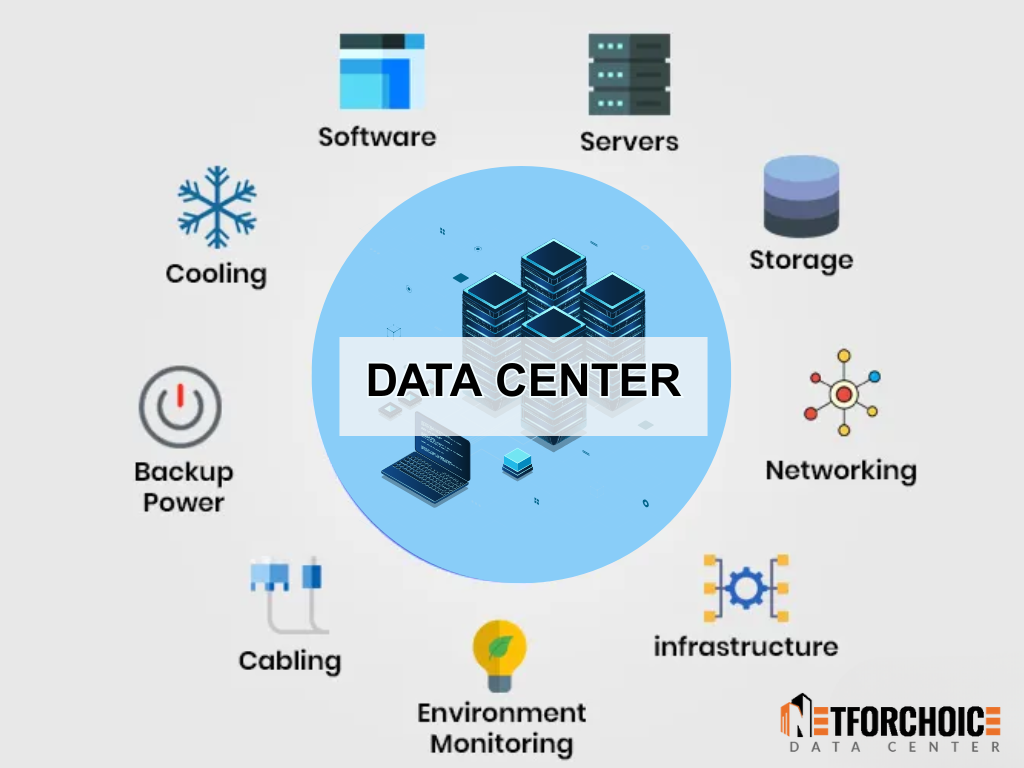
The architecture of a data center is the foundation upon which its performance, efficiency, and scalability depend. It encompasses the design and layout of all systems—both physical and virtual.
1. Physical Infrastructure
Data centers are carefully constructed with precision to ensure optimal space utilization, airflow, and maintenance access. This includes:
- Server Racks: Housing thousands of servers in standardized enclosures.
- Cooling Systems: Precision cooling like CRAC (Computer Room Air Conditioning) and hot/cold aisle containment to manage heat output.
- Cable Management: Raised flooring or overhead trays to separate power and network cables, preventing interference.
2. Power Systems
Uninterrupted power is critical. Data centers include:
- Primary Power from utility grids.
- UPS Systems (Uninterruptible Power Supplies) to handle power surges and short-term outages.
- Backup Generators for long-term power in case of grid failure.
- Power Distribution Units (PDUs) to ensure efficient and safe delivery of electricity to all equipment.
3. Networking Infrastructure
To ensure seamless communication and data transfer:
- High-speed Switches and Routers connect servers internally and externally.
- Fiber Optic Cabling provides ultra-fast connectivity.
- Redundant Internet Connections guarantee uptime even if one provider fails.
4. Security Systems
Security is enforced at both physical and virtual levels:
- Physical Security: Surveillance cameras, biometric scanners, and restricted access zones.
- Cybersecurity: Firewalls, intrusion prevention systems, and real-time monitoring tools to defend against digital threats.
5. Virtualization and Automation
Modern data centers use virtual machines, software-defined networking, and cloud orchestration platforms to optimize performance, scalability, and resource management.
6. Tier Classification
Data centers are classified by the Uptime Institute from Tier I (basic) to Tier IV (fault-tolerant). The higher the tier, the greater the redundancy, uptime, and fault tolerance.
| Tier | Redundancy | Availability | Downtime (per year) |
|---|---|---|---|
| Tier I | No redundancy | 99.671% | 28.8 hours |
| Tier II | Partial redundancy | 99.741% | 22 hours |
| Tier III | Concurrently maintainable | 99.982% | 1.6 hours |
| Tier IV | Fully fault-tolerant | 99.995% | 26 minutes |
NetForChoice operates Tier IV data centers, offering maximum uptime and resilience for mission-critical applications.
How Data Centers Work
When users interact with a website or service, their request is routed through the internet to a center. Here, a server processes the request—whether that’s pulling up a webpage, retrieving data, or executing a transaction—and sends the response back.
This entire process, though seemingly instantaneous, relies on countless components working together: servers, networking switches, software, storage devices, and power systems.
Behind every click, stream, or transaction lies a well-orchestrated dance of technologies within a data center.
Comparison: On-Premises vs. Colocation vs. Cloud
Before choosing a solution, it’s vital to understand the differences between the models:
| Feature | On-Premises | Colocation | Cloud (e.g., NetForChoice, AWS) | |
|---|---|---|---|---|
| Ownership | Business-owned | Third-party owned | Cloud provider | |
| Capital Investment | High | Moderate | Low | |
| Maintenance | In-house | Shared responsibility | Provider-managed | |
| Scalability | Limited | Moderate | High | |
| Speed to Deploy | Slow | Moderate | Fast | |
| Control | Full | Partial | Variable | |
Security, Compliance, and Global Reach
As cyber threats and data regulations become more complex, modern data centers prioritize:
- Advanced Security: 24/7 surveillance, intrusion detection, and multi-layer firewalls.
- Regulatory Compliance: Certifications like ISO 27001, SOC 2, GDPR, HIPAA.
- Global Reach: Data centers strategically located worldwide reduce latency and support data residency laws.
Why Data Centers Matter for Business
The business impact of a reliable data center is profound:
- High Availability: Reduced downtime keeps operations running smoothly.
- Business Continuity: With built-in redundancy and disaster recovery, data centers protect against unexpected failures.
- Cost Efficiency: Outsourcing infrastructure reduces capital expenses.
- Scalability: Businesses can scale their IT resources as they grow.
For organizations aiming to stay competitive, investing in a trusted data center partner like NetForChoice is not just a technical decision—it’s a strategic one.
The Future of Data Centers
Data centers are evolving rapidly with technologies like:
- Green Infrastructure: Emphasis on sustainability and energy efficiency.
- Edge Computing: Processing data closer to users for faster services.
- AI and Automation: Enhancing operations through real-time analytics and predictive maintenance.
The next generation of data centers will be smarter, greener, and even more vital to global digital ecosystems.
Conclusion
Data centers are much more than buildings full of servers. They are the digital command center that drives modern business. The more you understand how they are designed, how they operate, and how important they are to your strategy and planning, the better positioned you will be to make the right decisions for your infrastructure.
From migrating to the cloud to expanding your digital services platform, or storing highly secure data, finding the right partner—like NetForChoice will be a key component of your long-term goals.


